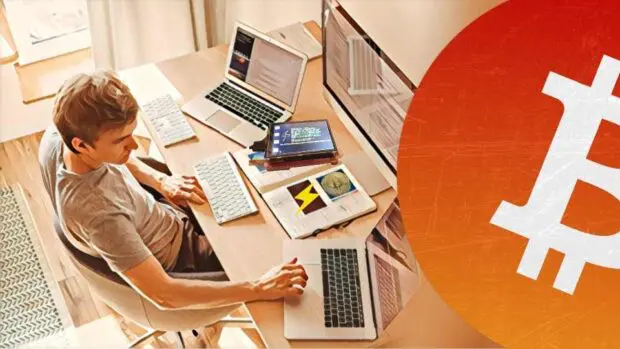This article was originally published on joedavison.com
Lightning Network is growing in popularity and many believe it is the answer to bitcoin scalability. In order to understand Lightning Network more, I recently set out to build and run a Lightning node from scratch on my spare Linux machine.
To start, I downloaded the LND source code from github. I had some local environment issues to fix such as installing Go and a series of other dependencies. I saw the docker distribution and tried that rather than worry about my local environment.
Unfortunately I had issues with docker that proved even more difficult so I went back to configuring my local environment, setting environment variables, configuration files in ~/.lnd/, admin.macaroon, etc.
Rather than download the entire blockchain, I configured LND to use neutrino. Finally got it working and ran ./lnd from the command line. Opened another terminal.
Then I used lncli to set up a wallet and generate a bitcoin receive address. Deposited some bitcoin to the node. Spent some time studying the various endpoints that could be called with lncli and the API signatures. Tested out a bunch of lncli commands to get a feeling for interacting with the node endpoints.
I decided to open an initial channel of 200,000 sats. I picked a well-connected and well-known node to open a channel with, fulmo.org. I noticed there was an option in the command to open a new channel which allowed for pushing a balance to the remote node.
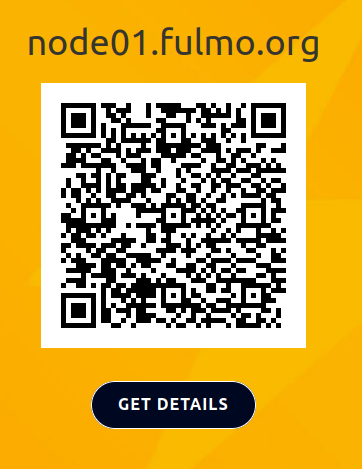
I decided to retain 100,000 in local balance and push 100,000 to the remote node. I thought this would be a good idea to start out with some inbound capacity but I soon after learned this was a mistake. (When the channel is closed, that amount will go to the remote node. A small cost for a big education …)
Once this channel was open, after a few hours I decided to search the internet for my node. I googled the public key of my node and found a result on 1ML. I went through the process to claim my node. This process involved opening a channel in a specific amount to 1ML. This would be my node’s second channel of 278,171 sats.
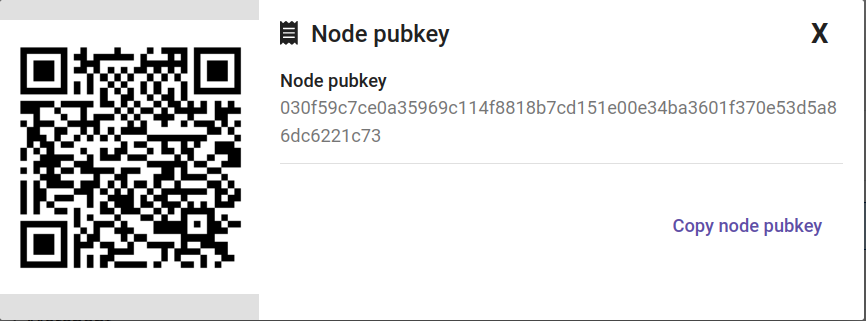
You can find my Lightning node 1ML profile page here.
With two channels open, it was time to test sending and receiving some payments.
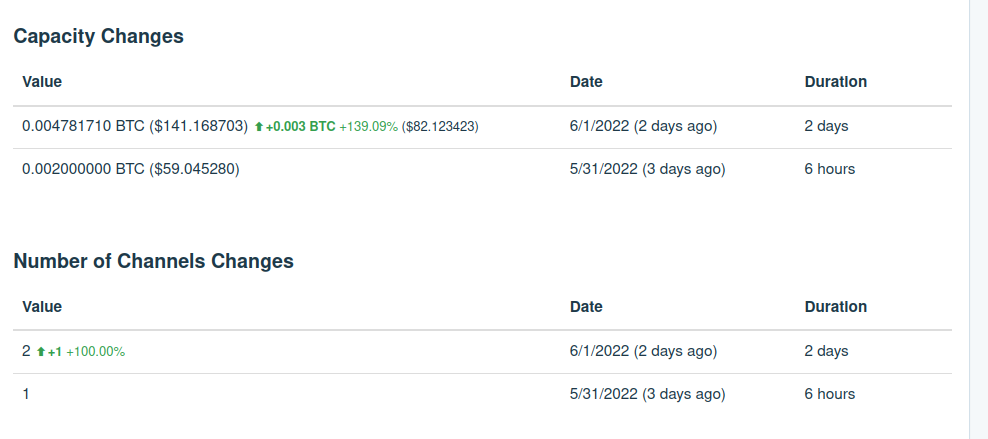
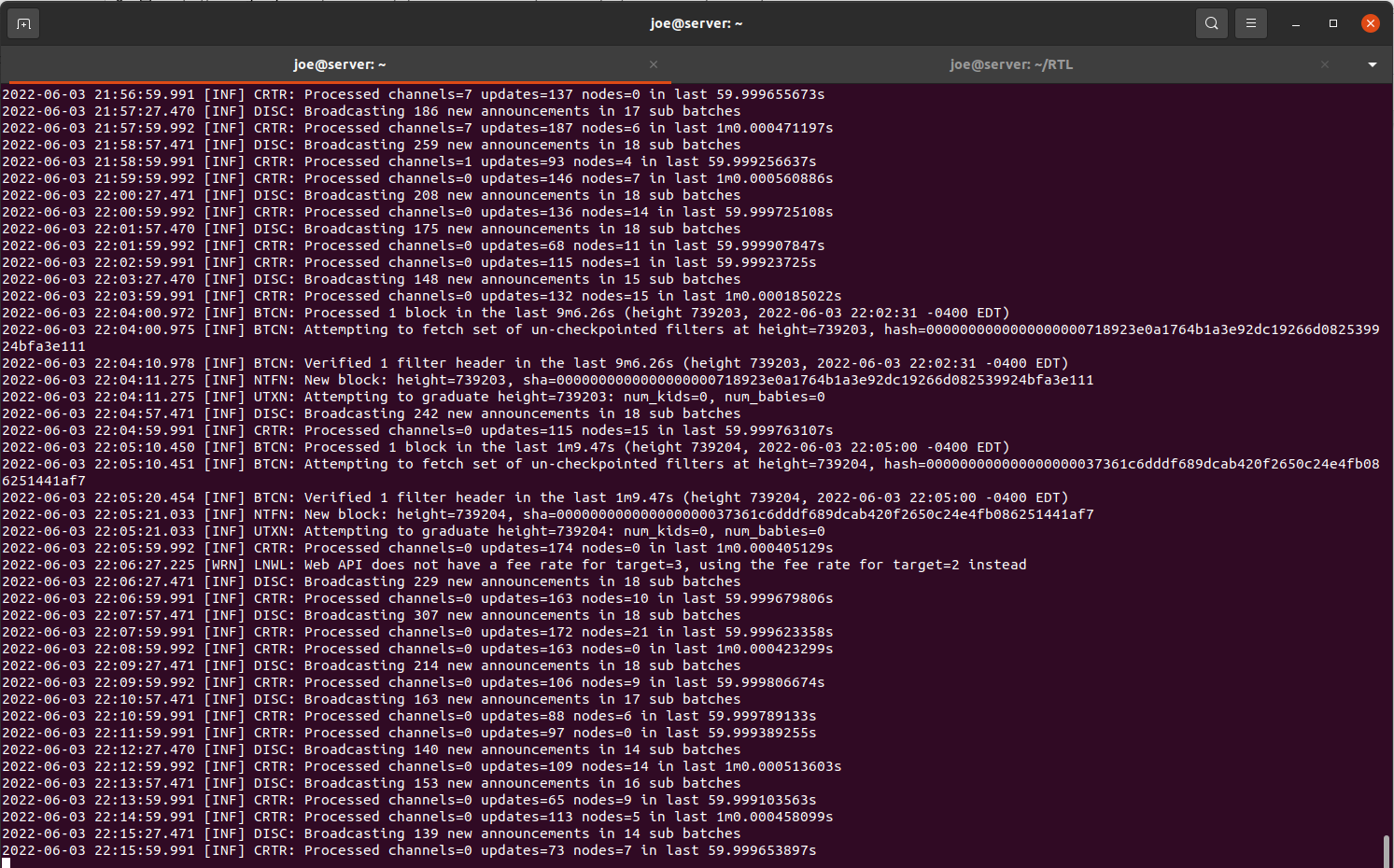
While doing some additional research I heard about RTL, a front-end to the same functionality available through lncli. After resolving a number of nodejs dependencies (including gratuitous use of the ‘–force’ modifier), and setting few configuration flags, I got RTL running and navigated to localhost:3000

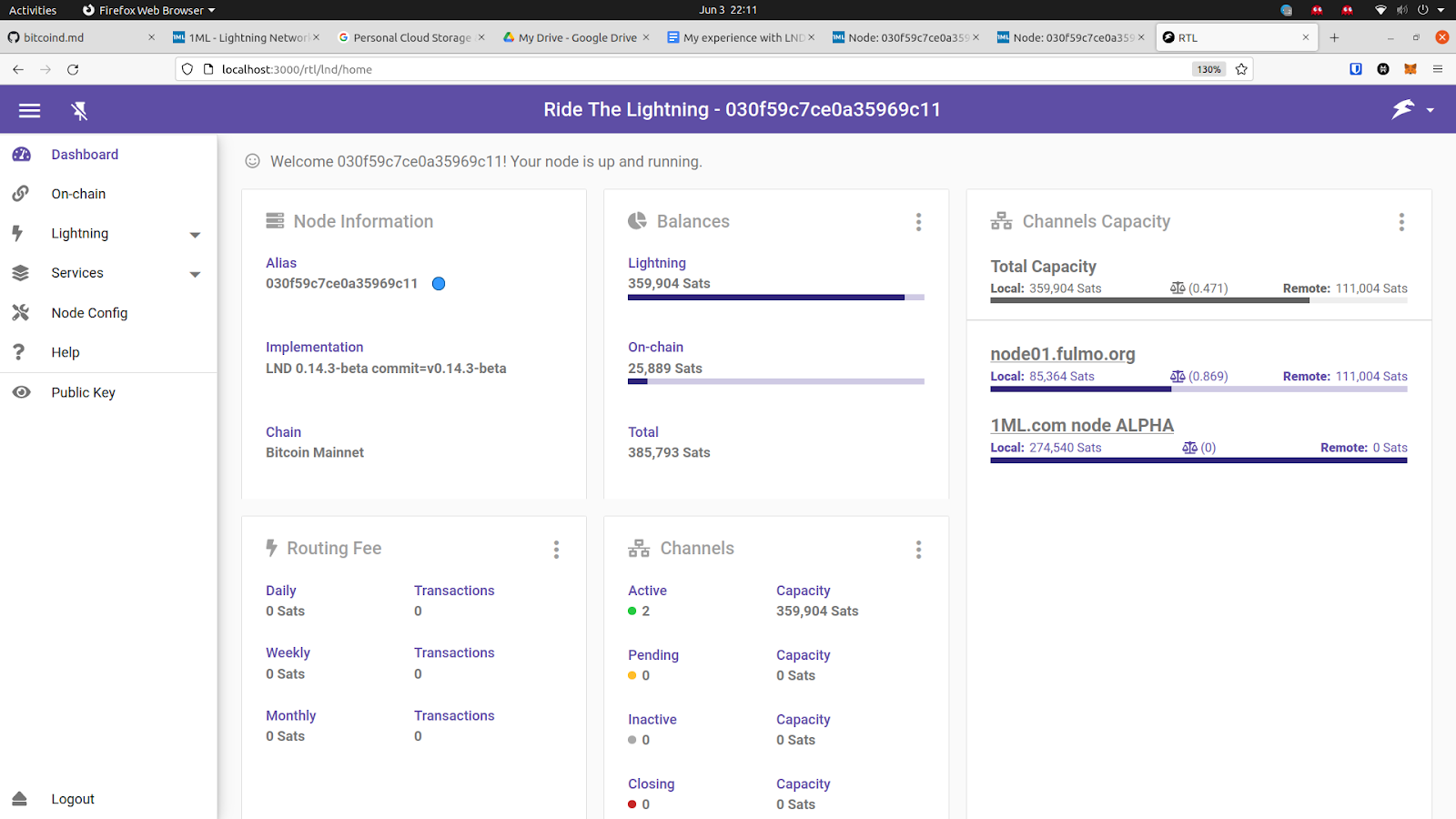
RTL dashboard for LND node 030f59c7ce0a35969c11
I used the RTL interface to update the fee policy on my channels to 0 mSat base (as suggested by lightning researcher René Pickhardt), 1 mSat fee rate
Observations so far:
- Payments over 70,000 sats consistently cannot find a route
- Payments between 20,000 and 50,000 sats work most of the time but not always
- In the typical case payments have 4-5 hops
- In the worst cases there are 15 hops or no route at all
- No receive routes found for Blue Wallet or LNTXBOT invoices
- Gossip messages are being broadcast
Next steps:
- Increase capacity to 0.1 BTC (10 well-connected channels 0.01 BTC each)
- Retest sending 100,000+ sat payments
- Retest receiving in any amount
My takeaway:
Lightning Network circa 2022 reminds me of the 1995-1999 era web. It’s fun, it’s confusing. It sort of works, well enough that everyone sees massive potential. It feels inevitable, like it is only a matter of time until this is everywhere.
In the meantime, there is much work to do. What a time to be alive!
About the author
Joe Davison is a former Engineering, Product and Program management leader at Google and Apple with 20+ years of experience scaling foundational internet services and software development organizations.
Follow Joe on Twitter:

